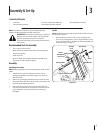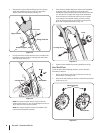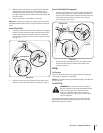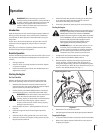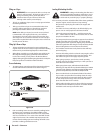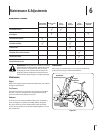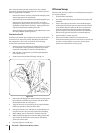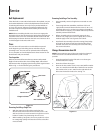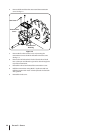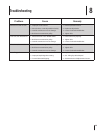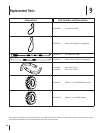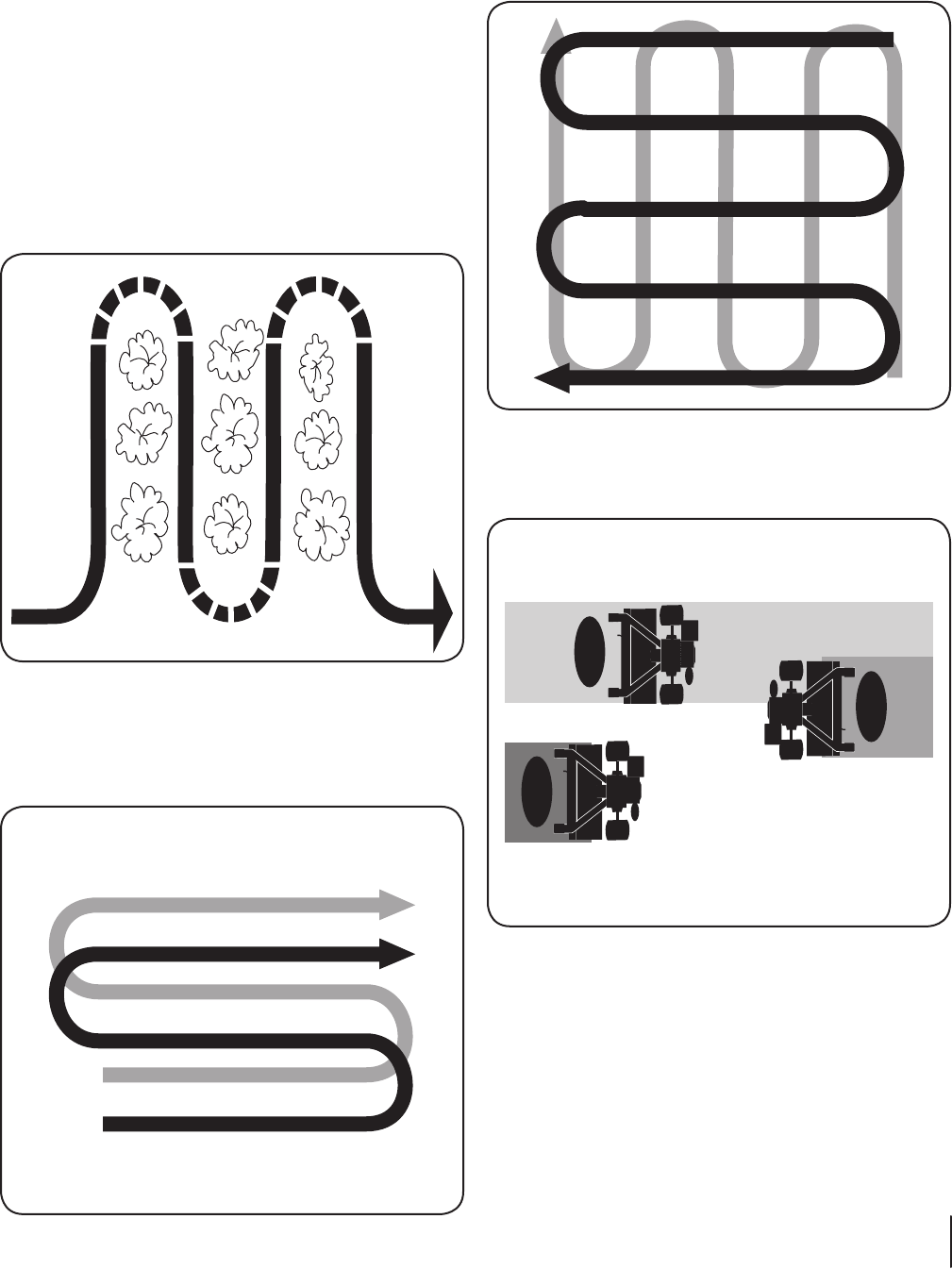
13Section 5 — operation
Avoid the temptation to push down on the handlebars in an
attempt to force the tiller to dig deeper. Doing so takes the
weight off the powered wheels, causing them to lose traction.
Without the wheels to hold the tiller back, the tines will
attempt to propel the tiller backward, towards the operator.
When cultivating (breaking up surface soil around plants to
to 2” deep. Using shallow tilling depths helps prevent injury
to the plants whose roots often grow close to the surface.
If needed, lift up on the handlebars slightly to prevent the
tines from digging too deeply. (Cultivating on a regular basis
not only eliminates weeds, it also loosens and aerates the
soil for better moisture absorption and faster plant growth.)
Watering the garden area a few days prior to tilling will make
tilling easier, as will letting the newly worked soil set for a
day or two before making a final, deep tilling pass.
Figure 5-4
Suggested Tilling Patterns
When preparing a seedbed, go over the same path twice in
the first row, then overlap one-half the tiller width on the
rest of the passes. See Fig. 5-5.
Figure 5-5
When finished in one direction, make a second pass at
best results (in very hard ground, it may take three or four
passes to thoroughly pulverize the soil.)
Figure 5-6
If the garden size will not permit lengthwise and then crosswise
tilling, overlap the first passes by one-half a tiller width, followed
by successive passes at one-quarter width. See Fig. 5-7.
1
2
3
Figure 5-7





